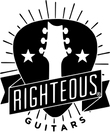Setting Up a Pedalboard 101
Interested in setting up a pedalboard? We can help get you off to a good start!
A pedalboard is a great way to organize, protect, and carry your favorite effects pedals around. In fact a well put together pedalboard can give years of trouble-free performance and keep everything nice and neat. While, like music in general, there are no rules that are written in stone in regards to setting up a pedalboard, there are some good starting points that help keep things as simple as possible when getting started. Let's cover the basics and get you on the right track!
What all goes into a good pedalboard?
- Size: First you need decide how large of a board you need to get to best suit your needs. They are available in many different sizes, so options are nearly limitless. Lay your pedals out on the floor and get to measuring!
- Case/Bag: What version of a board do you need? Most manufacturers offer more than one version of their pedalboards with different cases. From a gig bag (minimal protection and more likely to have your knobs move in transport) to a lightweight case (best choice for most people) to a ATA flight case (for heavy travel and use, you can find one that will be perfect.
- Power Supply: Power supplies are a key component to a good pedalboard. A good power supply should be isolated to prevent noise from pedals interacting with one another and should also have plenty of amperage to ensure adequate power is available. You can find amperage requirements with a quick search on your pedals. Too much is not a problem, but not enough can cause serious issues. Voltage is also important as well as polarity. All of this information is readily available and a good, quality power supply will handle it. Check out the options from Cioks for what we consider to be the best on the market.
- Patch Cables: Patch cables are what you will use to connect each pedal to the next. You can buy pre-made or build-your-own with a kit. We offer both options here at Righteous Guitars.
- Velcro: Velcro or, even better, 3m Dual Lock. This is what will attach your pedals to the board and the better the attachment, the longer things will last. Dual Lock is our choice due to its relatively strong bond.
- Junction Box: A junction box is an optional component, but one that completely takes stress off of your pedals as you will be plugging into and out of the box while it stays connected to your pedals all the time. These can be super simple all the way to having XLR outs, MIDI connectivity, Cab Simulators, and more.
How to set it up:
Signal path is the next thing to talk about and it is general guidance (meaning you can literally do this any way you want, but there is an order that suits 99% of players). This is the order of pedals by type of effect in order to get the most out of each. Since every pedal after another will also be effected by the one in front of it, there are some interactions that may not be ideal for your tone. This is the most basic layout from guitar input to out to amp:
- Tuner - Nothing is before it so that it receives a clean signal from your guitar no matter what.
- Univibe-style effects - while most modulations come later, the majority of the time people are emulating greats such as Jimi, Trower, and so on. To get that effect, it should be first after tuner.
- Fuzz? Depends on who you ask. If you put it here you may need a buffer to correct a common issue with fuzz pedals and wah, but it does sounds very good and classic.
- Wah - This is the traditional placement of the wah, but if you place it after overdrives you will get more of a Morello type of sound with a more intense wah tone. So going up fron you will be overdriving the wah. putting it after overdrive and you will be wah'ing the overdrive.
- Fuzz? Depends on who you ask. If you put it here it will sound more modern in many ways.
- Octave pedals and pitch shifters will sound best here almost always.
- Compression would normally go here as it will amplify the noise from other pedals and this is a safe bet on placement.
- Gain - Overdrives, boosts, and distortions come next. you can use multiple and put them in whatever order you like.
- Modulations include chorus and flange as will as vibrato and some others. They almost always sound best after the gain section.
- Delay is an echo effect and typically sounds best here.
- Reverb is the sound of a room and will usually sound best in this spot. You can flip delay and reverb for a different, washier texture.
- Buffers (if you need/want them). A buffer is used to recover lost signal and bring it back up to nominal. Bigger boards may benefit from this, but many pedals also have buffers built in.
You can also add in switching systems and much more, but this is a good place to start building a fantastic pedalboard and make it easier to supercharge your creativity!
